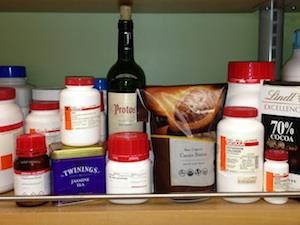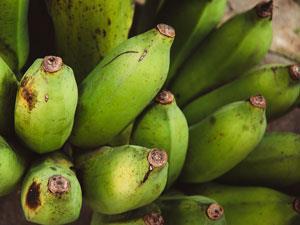US researchers have discovered a simple way to make coatings with antibacterial and antioxidant properties using polyphenols found in green tea, red wine and cacao. The bioinspired approach could allow for many applications, including antibacterial coatings for medical instruments and implants, food packaging and processing, and water purification membranes.

Plant-derived polyphenol coatings have been made before but they require several steps and expensive ingredients and often discolour the underlying substrate, which is undesirable to manufacturers who want to control the aesthetics of their products.
Phillip Messersmith's group at Northwestern University in Evanston, Illinois, has discovered that when polyphenol powder is dissolved in water and salt is added, colourless, thin coatings with antibacterial and antioxidant properties form. What's more, the coatings deposit easily on a variety of substrates including hydrophobic materials such as Teflon.
Messersmith's lab has been developing novel materials and coatings inspired by mussel adhesive proteins for years and thought that the chemical similarities between the proteins and polyphenols might translate.
The team first explored making the coatings using aqueous solutions derived from green tea, cacao beans, dark chocolate and red wine. 'Simple experiments performed in my kitchen showed that these extracts deposit thin, invisible coatings on the surface of containers such as a tea cup or wine glass,' explains Messersmith.
'We then demonstrated that it also works with chemically purified plant polyphenols and we ultimately focused on pyrogallol and tannic acid as particularly effective, widely available and low cost coating precursors,' he says. 'The method is simple: dissolve tannic acid in water, add salt, adjust the pH to slightly above neutral and dip coat an object for minutes to hours. At the end rinse with water.'
'A surprising finding of the study was that salt is a key ingredient. In the absence of salt, coatings do not form well at all,' says Messersmith. The role of salt remains unknown, but Messersmith suggests it may be related to electrostatics or charge screening.
'The scavenging of reactive oxygen species, antimicrobial properties and of course edibility of these coatings holds much promise for these coatings to find applications in medical and food-related applications,' suggests Rein Ulijn, an expert in bioinspired chemistry at WestCHEM at the University of Strathclyde, UK.
'The methodology may also find its way into biomaterials, biointerface and bionano laboratories, where mild, aqueous surface functionalisation methods are required for the immobilisation of bioactive molecules,' Ulijn adds.







No comments yet